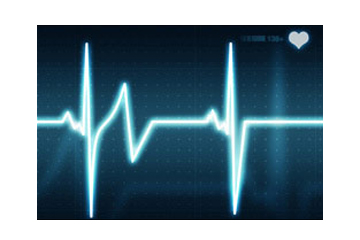Silent But Deadly: Half of All Heart Attacks Have No Symptoms

Nearly half of all heart attacks may have no symptoms at all — but that doesn't mean they're any less deadly than heart attacks with symptoms, a new study finds.
"Silent" heart attacks account for 45 percent of all attacks in the U.S., according to the study, published today (May 16) in the journal Circulation.
In addition, the researchers also found that silent heart attacks raise a person's risk of dying from heart disease by three times, compared with if they had not had a heart attack. [7 Foods Your Heart Will Hate]
Silent heart attacks are as bad as heart attacks with warning signs or symptoms, said Dr. Elsayed Soliman, the director of the epidemiological cardiology research center at Wake Forest Baptist Medical Center in North Carolina and the senior author of the study.
However, "because patients don't know they have had a silent heart attack, they may not receive the treatment they need to prevent another one," Soliman said in a statement.
Heart attacks occur when a blood vessel that carries blood to the muscle tissue of the heart becomes blocked. Without blood, that section of the heart muscle begins to die.
People tend to associate heart attacks with their common symptoms, including chest pain, shortness of breath and dizziness. In the case of silent heart attacks, however, the heart muscle tissue can be damaged or dying even though there are no symptoms, or the symptoms are so mild that a person does not recognize that they are having any, Soliman said.
Get the world’s most fascinating discoveries delivered straight to your inbox.
People may learn that they have had a silent heart attack after the fact — in many cases, the doctor discovers it accidentally while testing for something else, Soliman told Live Science. Doctors can recognize signs of a previous silent heart attack using an echocardiogram (EKG), a test that measures the heart's electrical activity, he said. The heart's electrical activity is altered, even years after a silent heart attack, according to the study.
Related: Why Are More Young People Having Heart Attacks?
Soliman said that the results of the study do not mean that doctors should use EKGs to screen healthy, asymptomatic patients for silent heart attacks. However, if doctors spot signs of a previous silent heart attack when they perform an EKG, it should be taken seriously, and follow-up testing should be done to confirm whether the patient has indeed had a previous heart attack, Soliman said.
EKGs are used regularly for people at high risk for heart disease, he noted.
The researchers also found that although silent heart attacks were more common in men, they were more deadly in women, Soliman said.
While the study wasn't designed to look at why these differences between men and women may exist, scientists know that men and women experience heart disease in different ways, Soliman said. The results of the study underscore the importance of caring for men and women differently when it comes to heart health, he said. [3 Facts About Heart Attacks]
This is not the first study to suggest that silent heart attacks are nearly as common as heart attacks with symptoms. While other studies have had similar findings, the new study is one of the largest done to date and strongly confirms what we already suspected, Soliman said.
In the study, the researchers looked at data on nearly 9,500 middle-age adults who were enrolled in the Atherosclerosis Risk in Communities Study, which began in 1987 and is sponsored by the National Heart, Lung, and Blood Institute. Over the course of a nine-year period, 317 people had silent heart attacks and 386 people had heart attacks with symptoms, the new findings showed. The researchers also continued to look at data for another two decades to gather information on rates of death.
Follow Sara G. Miller on Twitter @saragmiller. Follow Live Science @livescience, Facebook & Google+. Originally published on Live Science.

 Live Science Plus
Live Science Plus





